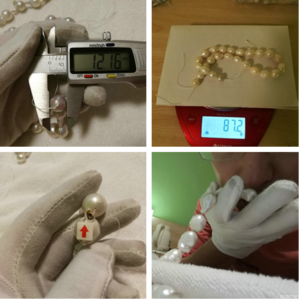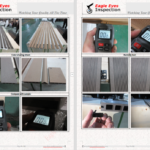
The inspection and testing points for pearl necklaces involve multiple aspects to ensure that their quality, craftsmanship, and appearance meet the standards. The following are detailed inspection and testing points:
1. Appearance inspection
-Overall appearance: Check whether the necklace is aesthetically pleasing and whether there are any obvious flaws or defects.
-Pearl shape: Check whether the shape of the pearl is uniform, whether it is round, nearly round, or meets the design requirements.
-Pearl luster: Observe whether the luster of pearls is soft, uniform, and whether there is any dull or dull phenomenon.
-Pearl color: Check whether the color of the pearls is consistent, whether there are color differences or spots.
-Surface imperfections: Check the surface of the pearl for cracks, pits, scratches, or other defects.
2. Size and weight inspection
-Pearl size: Measure the diameter or length of the pearl to ensure compliance with design requirements.
-Necklace length: Measure the total length of the necklace to ensure compliance with specifications.
-Pearl weight: Weigh the pearl to ensure it matches the nominal value.
3. Process inspection
-Punching quality: Check whether the pearl’s perforation is centered, whether the hole opening is smooth, and whether there is any damage.
-String quality: Check whether the string is secure and whether there is a risk of looseness or breakage.
-Fastener quality: Check whether the fasteners (such as dragon shrimp buckles, spring buckles, etc.) are firm and whether they open and close smoothly.
-Connection point: Check whether the connection points between pearls are tight, whether there is any looseness or detachment.
4. Material inspection
-Pearl material: Confirm whether the pearl is natural pearl, cultured pearl, or artificial pearl, ensuring consistency with the nominal value.
-Wire material: Check if the string is made of durable materials (such as silk thread, nylon thread, etc.) to ensure that it is not easily broken.
-Material of fasteners: Check whether the fasteners are made of metal materials (such as silver, gold, stainless steel, etc.) to ensure that they are not easily rusted or damaged.
5. Durability testing
-Tensile testing: Apply a certain amount of tension to the necklace to check if the string and fasteners are secure, and if the pearls have fallen off.
-Wear resistance test: Simulate the wearing process and check whether the pearl surface is easily worn or scratched.
-Waterproof test: Check if the pearls and wires are water-resistant to ensure they are not easily damaged in humid environments.

on site testing:
1.Appearance
2.Quantity check
3.Smell test
4.Sharp edge test
5.Connection check




